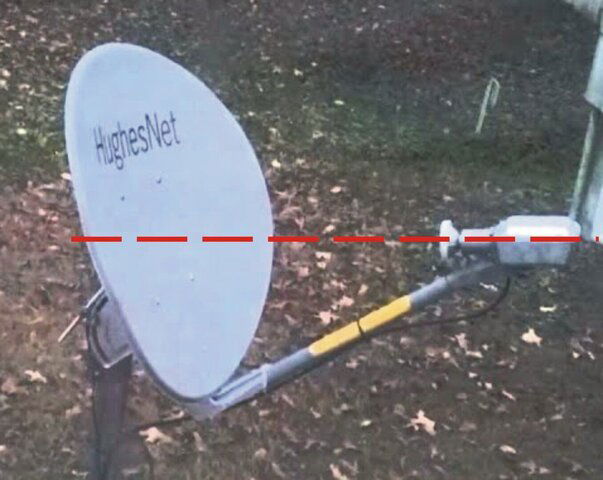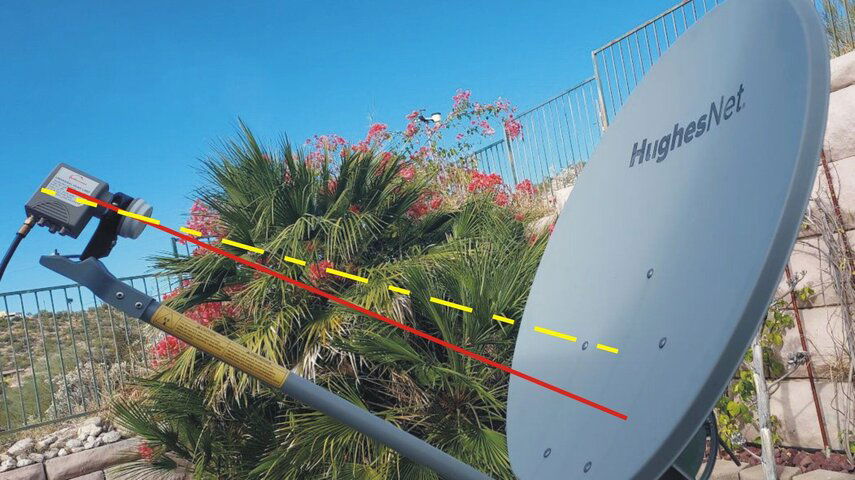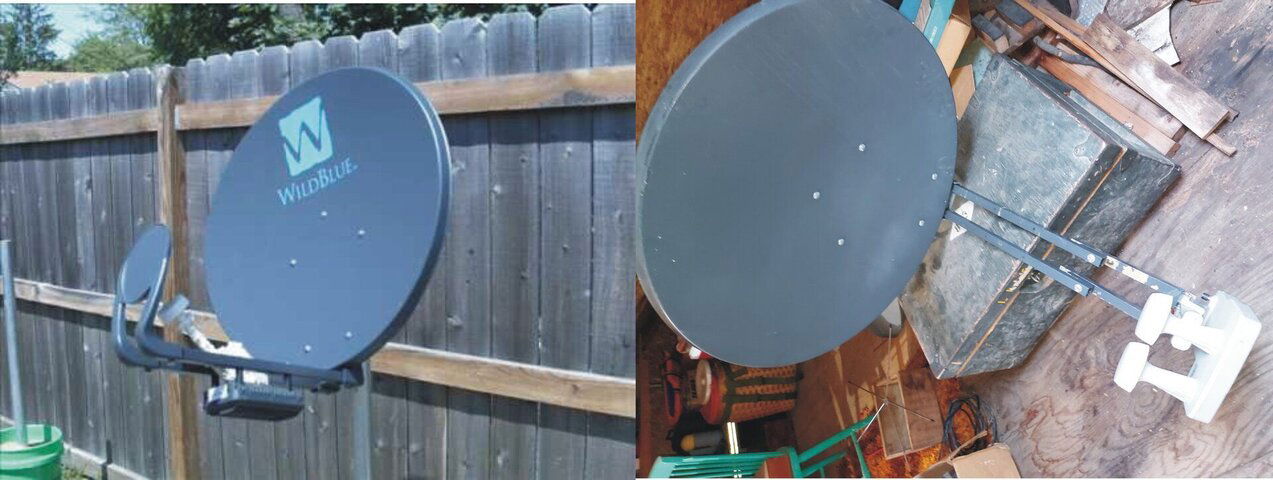I finally hit it! This one seemed tougher to find than Galaxy 19 (97W).
I got 7 channels, all on the same transponder 12180-V 30000. I tried a blind scan after that, but still only found that 1 transponder.
But, I'm happy.
Here's a picture of my dish. I did have my LNB pointed a little high up until today, so I lowered it such that it's parallel to the arm to which it's mounted; that seemed to do the trick!

I got 7 channels, all on the same transponder 12180-V 30000. I tried a blind scan after that, but still only found that 1 transponder.
But, I'm happy.
Here's a picture of my dish. I did have my LNB pointed a little high up until today, so I lowered it such that it's parallel to the arm to which it's mounted; that seemed to do the trick!






